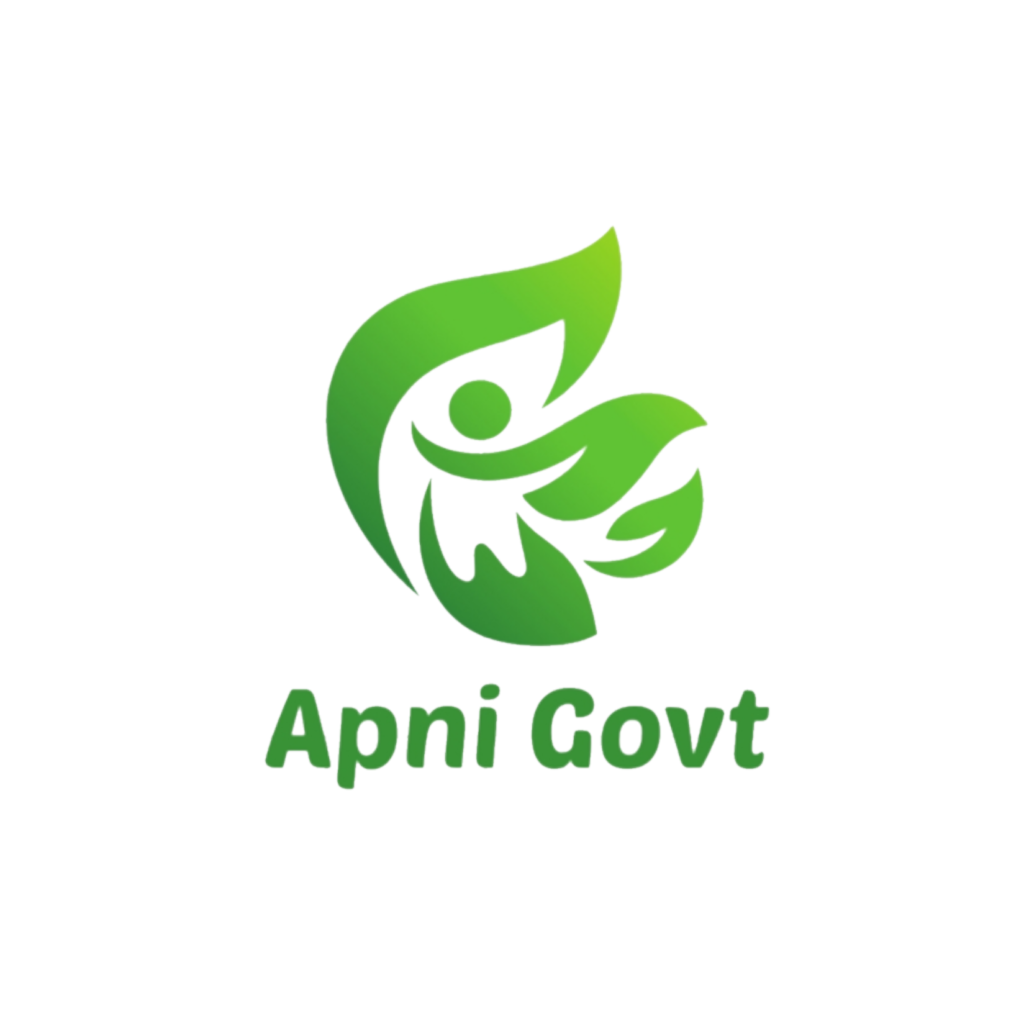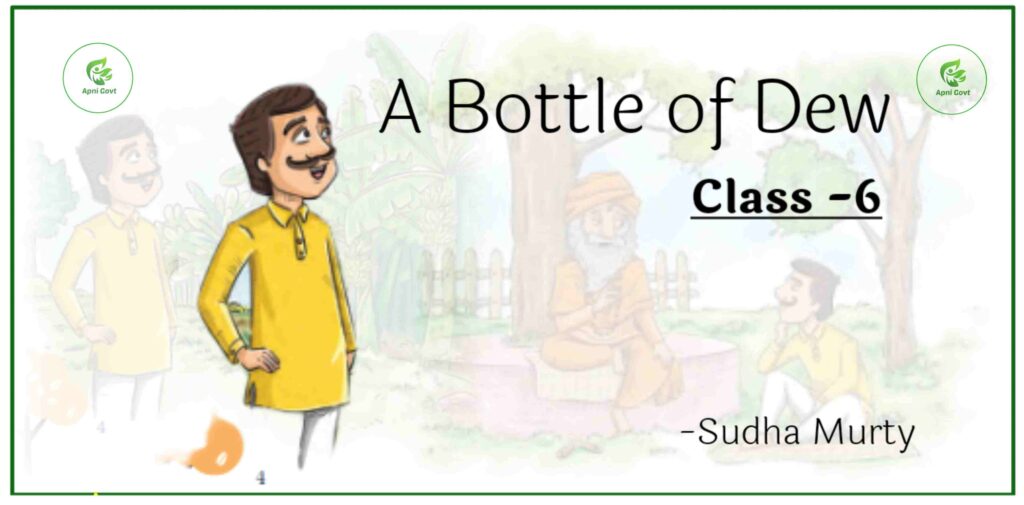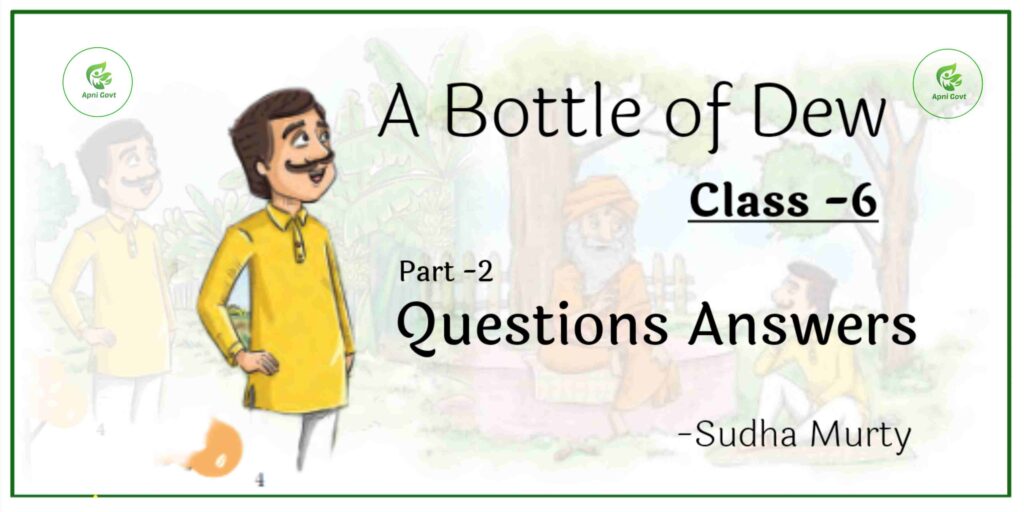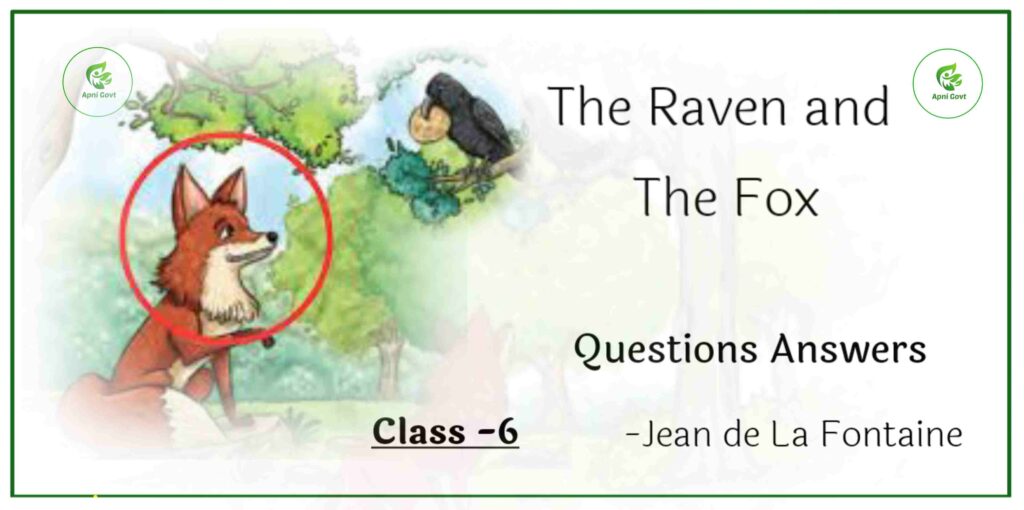The Kites
Summary — The Kites (Unit V • Lesson 2)
English: “The Kites” (poem) captures a child’s joyful wish to ride a kite and fly high in a wind-whipped sky. Using vivid images and sound devices—similes (“like coloured birds”), alliteration (“wild wind”), repetition (“high, high”) and clear rhymes—the poet shows the thrill of drifting on “paper wings,” looking down over parks and rooftops, and the wonder it creates in people below. The poem celebrates imagination, freedom, and the simple happiness of kite-flying while helping learners notice poetic techniques and feelings.
हिंदी: “The Kites” (कविता) एक बच्चे की उस आनंदित कल्पना को दिखाती है जिसमें वह पतंग पर बैठकर तेज़ हवा वाले आकाश में बहुत ऊँचा उड़ना चाहता है। कवयित्री जीवंत चित्रों और ध्वनि-शिल्प का प्रयोग करती हैं—उपमा (“रंगीन पक्षियों जैसी”), अनुप्रास (“wild wind”), पुनरुक्ति (“high, high”) और स्पष्ट तुक—ताकि “कागज़ के पंखों” पर बहने का रोमांच, ऊपर से पार्क व छतों का दृश्य, और नीचे लोगों का आश्चर्य उभर सके। कविता कल्पनाशक्ति, स्वतंत्रता और पतंग-उड़ाने की सरल खुशी का उत्सव मनाती है तथा विद्यार्थियों को काव्य-तकनीकों और भावों पर ध्यान देना सिखाती है।
Let us do — I (Answer & share) • Bilingual Model Answers
1. Have you ever flown a kite or seen someone fly it? Where? When?
English (Model): Yes, I have flown a kite on our terrace during Makar Sankranti in January.
हिंदी (मॉडल): हाँ, मैंने जनवरी में मकर संक्रांति पर हमारी छत से पतंग उड़ाई है।
2. Describe the kite—colour(s), shape, tail design, any detail.
English: It was diamond-shaped, bright red and yellow, with a long ribbon tail and small bows.
हिंदी: वह हीरे के आकार की थी—चटख लाल-पीली; लंबी रिबन-पूंछ और छोटी-छोटी बो-टाई लगी थीं।
3. What did you think when you saw the kite up in the sky?
English: I felt excited and free, watching it rise higher and higher.
हिंदी: उसे ऊँचा उड़ते देखकर बहुत रोमांच और मुक्ति जैसा महसूस हुआ।
Let us do — II (Kite Festival videos) • Bilingual
1. Share what you saw and what people were doing.
English: Colourful kites, music, cheering crowds, competitions, and night-glow kites lighting the sky.
हिंदी: रंग-बिरंगी पतंगें, संगीत, खुश भीड़, प्रतियोगिताएँ और रात में चमकती पतंगें—आसमान जगमगा रहा था।
2. Would you like to participate? Why?
English: Yes, because it looks exciting and celebrates our culture and teamwork.
हिंदी: हाँ, क्योंकि यह रोमांचक है और हमारी संस्कृति व टीम-भावना का उत्सव भी है।
3. What kind of kite would you like to fly?
English: A diamond-shaped kite with a long tail and a sturdy frame for strong wind.
हिंदी: हीरे के आकार की पतंग—लंबी पूंछ और मजबूत फ्रेम वाली, ताकि तेज़ हवा में भी टिके।
Let us do — III (Picture) • Word bank used: windy, kite, flying, birds, sky, looking, has, ribbons
1. I can see ___________, ___________ and ___________ in the picture.
Answer: birds, kite and sky.
उत्तर: पक्षी, पतंग और आसमान।
2. The weather in the picture is ___________.
Answer: windy.
उत्तर: तेज़ हवा।
3. The kite is ___________ high in the sky.
Answer: flying.
उत्तर: उड़ रही है।
4. The child is ___________ from below.
Answer: looking.
उत्तर: नीचे से देख रहा/रही है।
5. The tail of the kite ___________.
Answer: has ribbons.
उत्तर: पतंग की पूंछ में रिबन लगे हैं।
Let us do — IV (Think & answer) • Bilingual
1. List two more things you want to add to the picture.
English: Clouds and a hot-air balloon.
हिंदी: बादल और एक गर्म-हवा का गुब्बारा।
2. If I were the child, I would ___________.
English: hold the line carefully and try to make the kite climb higher.
हिंदी: डोर को संभालकर पकड़ता/पकड़ती और पतंग को और ऊँचा चढ़ाने की कोशिश करता/करती।
3. If I were the kite, I would ___________.
English: dance with the wind and glide over parks and rooftops.
हिंदी: हवा के साथ नाचता/नाचती और पार्क व छतों के ऊपर सरकता/सरकती।
Let us read — Original Poem (Daphne Lister)
Up in the air
See the kites fly,
Like coloured birds
In the wind-whipped sky.
I wish I were small
And light as air,
I would climb on a kite
And sail up there.
Then I would drift upon
The paper wings,
And hear the songs
That the wild wind sings.
What fun it would be
To look right down,
Over the park
And the rooftops of town.
The people below
Would stand and stare,
And wish they were me
High, high in the air.
— Daphne Lister
Hindi उच्चारण (line-wise)
अप इन द एयर / सी द काइट्स फ़्लाय, / लाइक कलर्ड बर्ड्स / इन द विंड-व्हिप्ड स्काय।
आई विश आई वर स्मॉल / ऐंड लाइट ऐज़ एयर, / आई वुड क्लाइम्ब ऑन अ काइट / ऐंड सेल अप देयर।
देन आई वुड ड्रिफ्ट अपॉन / द पेपर विंग्स, / ऐंड हियर द सॉन्ग्स / दैट द वाइल्ड विंड सिंग्स।
व्हॉट फ़न इट वुड बी / टू लुक राइट डाउन, / ओवर द पार्क / ऐंड द रूफटॉप्स ऑफ टाउन।
द पीपल बिलौ / वुड स्टैण्ड ऐंड स्टेयर, / ऐंड विश दे वर मी / हाई, हाई इन द एयर।
आई विश आई वर स्मॉल / ऐंड लाइट ऐज़ एयर, / आई वुड क्लाइम्ब ऑन अ काइट / ऐंड सेल अप देयर।
देन आई वुड ड्रिफ्ट अपॉन / द पेपर विंग्स, / ऐंड हियर द सॉन्ग्स / दैट द वाइल्ड विंड सिंग्स।
व्हॉट फ़न इट वुड बी / टू लुक राइट डाउन, / ओवर द पार्क / ऐंड द रूफटॉप्स ऑफ टाउन।
द पीपल बिलौ / वुड स्टैण्ड ऐंड स्टेयर, / ऐंड विश दे वर मी / हाई, हाई इन द एयर।
सरल हिंदी अर्थ (stanza-wise)
Stanza 1: पतंगें हवा में ऐसे उड़ती हैं जैसे रंगीन पक्षी और आसमान तेज़ हवा से भरा है।
Stanza 2: बच्चा चाहता है कि वह छोटा और हवा जैसा हल्का हो ताकि पतंग पर चढ़कर ऊपर तक जा सके।
Stanza 3: वह कागज़ के पंखों पर तैरना और तेज़ हवा के गाए गीत सुनना चाहता है।
Stanza 4: ऊँचाई से नीचे पार्क और शहर की छतों को देखने का मज़ा है।
Stanza 5: नीचे के लोग ठिठककर देखते और चाहेंगे कि वे भी उसकी जगह—बहुत ऊँचाई पर—होते।
Stanza 2: बच्चा चाहता है कि वह छोटा और हवा जैसा हल्का हो ताकि पतंग पर चढ़कर ऊपर तक जा सके।
Stanza 3: वह कागज़ के पंखों पर तैरना और तेज़ हवा के गाए गीत सुनना चाहता है।
Stanza 4: ऊँचाई से नीचे पार्क और शहर की छतों को देखने का मज़ा है।
Stanza 5: नीचे के लोग ठिठककर देखते और चाहेंगे कि वे भी उसकी जगह—बहुत ऊँचाई पर—होते।
Hard Words — Spelling • Hindi Uchcharan • Meaning
| Word/Phrase | हिंदी उच्चारण | हिंदी अर्थ |
|---|---|---|
| wind-whipped | विंड-व्हिप्ड | तेज़ हवा से धुँधला/झकोरों वाला |
| drift | ड्रिफ्ट | हवा में बहना/तैरना |
| rooftops | रूफटॉप्स | छतों की सतह/ऊपरी हिस्सा |
| stare | स्टेयर | टकटकी लगाकर देखना |
p.143 — Let us discuss — I (True/False + Sentence Completion)
A) True / False (from the poem)
- The child is looking at the kites — True.बच्चा पतंगें देख रहा है — सही।
- The kites look like birds of different colours — True.पतंगें अलग-अलग रंग के पक्षियों जैसी लगती हैं — सही।
- It was a rainy day — False (it’s a wind-whipped sky).बारिश का दिन था — गलत (तेज़ हवा वाला आसमान है)।
- The child wants to be like a kite — False (the child wants to be light as air and ride a kite).बच्चा पतंग जैसा बनना चाहता है — गलत (वह हवा जैसा हल्का होकर पतंग पर सवार होना चाहता है)।
- The child wishes to climb a tree first to get onto the kite — True (implied).बच्चा पहले पेड़ पर चढ़कर पतंग तक पहुँचना चाहता है — सही (निहित)।
- People down below would stare — True.नीचे के लोग टकटकी लगाकर देखेंगे — सही।
B) Complete the sentences
-
The poet says kites are like coloured birds — “See the kites fly / like coloured birds in the sky.”
Fill-in: The kites have been compared to birds because they fly like coloured birds in the sky. पूरक: पतंगों की तुलना पक्षियों से की गई है क्योंकि वे आसमान में रंगीन पक्षियों जैसी उड़ती हैं। -
The child wishes to be like air — “I wish I were small / And light as air…”
Fill-in: The child wishes to be as light as air. The child wishes this to be able to climb on a kite and fly. पूरक: बच्चा हवा जैसा हल्का होना चाहता है ताकि पतंग पर चढ़ सके और उड़ पाए।
p.144 — Sound & Rhyme • Let us think & reflect (I)
III) Alliteration — find sets
| Stanza | Words (from poem) | Consonant sound |
|---|---|---|
| 1 | wind-whipped | /w/ |
| 3 | wild wind | /w/ |
Create 4 more sets (your own): soft silver stream • happy hopping hare • bold bright banner • quick quiet quail.
चार और उदाहरण: सॉफ्ट सिल्वर स्ट्रीम • हैप्पी हॉपिंग हेयर • बोल्ड ब्राइट बैनर • क्विक क्वाइट क्वेल।
IV) Repetition
Repeated words: high, high — meaning: very high.
दोहराए शब्द: high, high — अर्थ: बहुत ऊँचा।
V) Rhyming words (end-rhyme)
Stanza 1: fly / sky • Stanza 2: air / there • Stanza 3: wings / sings • Stanza 4: down / town • Stanza 5: stare / air.
तुक: 1) फ्लाय/स्काय 2) एयर/देयर 3) विंग्स/सिंग्स 4) डाउन/टाउन 5) स्टेयर/एयर।
Let us think & reflect — I
- “What fun it would be…” Odd word (not the same feeling): care. अलग भाव वाला शब्द: care (बाकी — joy, excitement, happiness)।
Simile — class response (model)
Yes, similes like “like coloured birds” and “light as air” make the images vivid and help us imagine better.
हाँ, “रंगीन पक्षियों जैसी”, “हवा जितना हल्का” जैसी उपमाएँ चित्रों को जीवंत बनाती हैं और कल्पना आसान करती हैं।
p.145 — Let us think & reflect — II (Short Answers)
1) How does the poet describe the kites in the first two lines?
“See the kites fly, / Like coloured birds…” — kites are compared to colourful birds in a windy sky.“सी द काइट्स फ़्लाय / लाइक कलर्ड बर्ड्स…” — पतंगों की तुलना रंगीन पक्षियों से की गई है।
2) Which line shows the poet is above?
“To look right down” — the child is looking down from a height.“To look right down” — ऊपर से नीचे देखने का संकेत।
3) Choose the scene the child saw.
The view is over the park and the rooftops of town. (Select the picture that shows a top-view of park + rooftops.)दृश्य — पार्क और शहर की छतें ऊपर से। (वही चित्र चुनें जिसमें ऊपर से पार्क व छतें दिखें।)
4) Why climb a tree first to get onto the kite?
Because the kite is high; climbing a tree helps reach it.क्योंकि पतंग ऊँचाई पर है; पेड़ पर चढ़ने से पहुँचना आसान होगा।
5) What songs does the child hear?
“The songs that the wild wind sings.”“तेज़ हवा के गाए गीत।”
6) Why did people stare? What would you feel?
A child riding a kite high up is amazing and rare; people would be surprised. I would feel thrilled and a bit amazed.पतंग पर सवार बच्चा बहुत अनोखा दृश्य है; लोग चकित होंगे। मुझे रोमांच और अचंभा होगा।
7) If you were the kite carrying the child, what would you tell them?
“Hold the line gently, trust the wind, enjoy the view, and stay safe.”“डोर नर्मी से थामो, हवा पर भरोसा रखो, दृश्य का आनंद लो और सुरक्षित रहो।”
p.146 — Let us learn — I (Parts of a kite: dialogue)
Fill the blanks:
Bina: I like the long tail at the end of my kite. | Saroj: My kite’s cover is bright. The spine is black. | Bina: … My kite’s line is attached to the reel that wraps it. | Saroj: … the tip of a kite is called a nose.
बिना: मेरी पतंग की लंबी पूँछ (tail) मुझे पसंद है। | सरोज: मेरी पतंग का कवर चमकीला है। रीढ़ (spine) काला है। | बिना: मेरी पतंग की डोर (line) चरखी (reel) से जुड़ी है। | सरोज: पतंग की नोक को नोज़ कहते हैं।
p.147 — Let us create a poem (Cinquain) • Movement words
II) Sample Cinquain (5 lines)
Kite / bright, playful / flying, drifting, soaring / swiftly, happily / paper-bird
पतंग / रंगीन, चंचल / उड़ना, बहना, ऊँचना / तेज़ी से, खुशी से / कागज़-पक्षी
III) More movement words (besides “fly” & “drift”) — any 9
glide, soar, float, circle, dive, swoop, climb, sail, zigzag
ग्लाइड (सरकना), ऊँचना, तैरना, चक्कर लगाना, गोता लगाना, झपटना, चढ़ना, सैल करना/चलना, ज़िगज़ैग (टेढ़ा-मेढ़ा चलना)
p.148 — Movement match • Expressions • Let us listen
I) Circle words that match with ‘drift’
Correct choices: slow, downward, float.
सही विकल्प: धीमा (slow), नीचे की ओर (downward), तैरना/बहना (float)।
II) Types of movement (give meanings)
| Word | Meaning (EN) | हिंदी अर्थ |
|---|---|---|
| glide | smooth, gentle movement | धीमी, मुलायम उड़ान/सरकना |
| dive | go down fast | तेज़ी से नीचे जाना (गोता) |
| soar | rise very high | बहुत ऊँचा उठना |
| swoop | quick downward sweep | अचानक नीचे की ओर झपटना |
| circle | move round and round | गोल-गोल चक्कर लगाना |
IV) Expressions — make sentences
up in the air — “Many kites were up in the air during the festival.”
look right down — “From the terrace I could look right down at the playground.”
stay up there — “Hold the line tight so the kite can stay up there.”
stand and stare — “People would stand and stare if a child rode a kite!” up in the air — “त्योहार में कई पतंगें ऊपर आसमान में थीं।”
look right down — “छत से मैं मैदान को एकदम नीचे देख पा रहा था।”
stay up there — “डोर कसी रखो ताकि पतंग वहीं ऊपर बनी रहे।”
stand and stare — “यदि कोई बच्चा पतंग पर बैठे, लोग ठिठककर देखते रह जाएँगे!”
look right down — “From the terrace I could look right down at the playground.”
stay up there — “Hold the line tight so the kite can stay up there.”
stand and stare — “People would stand and stare if a child rode a kite!” up in the air — “त्योहार में कई पतंगें ऊपर आसमान में थीं।”
look right down — “छत से मैं मैदान को एकदम नीचे देख पा रहा था।”
stay up there — “डोर कसी रखो ताकि पतंग वहीं ऊपर बनी रहे।”
stand and stare — “यदि कोई बच्चा पतंग पर बैठे, लोग ठिठककर देखते रह जाएँगे!”
Let us listen — circle wrong words & correct them (Transcript: p.163)
- “June” → January (Makar Sankranti / Uttarayan).“June” की जगह January (मकर संक्रांति/उत्तरायण)।
- “Eastern India” → Western India (Gujarat).“Eastern India” की जगह Western India (Gujarat)।
- Statement is correct (mainly Gujarat; also Maharashtra, Telangana).वाक्य सही है (मुख्यतः गुजरात; महाराष्ट्र, तेलंगाना में भी)।
- Correct: different shapes, sizes and colours.सही: अनेक आकार, रंग, प्रकार।
- Accept as correct (tourism dept. organises a kite festival; phrasing may vary by year).सही मानें (पर्यटन विभाग पतंग उत्सव आयोजित करता है; वर्ष अनुसार बदल सकता है)।
p.149 — Let us speak • Let us write • Let us explore (I–II)
General notes (from page text)
Basant Panchami & Baisakhi (Punjab region) are celebrated with kite-flying; many people in India also enjoy flying kites on Earth Day.
पंजाब क्षेत्र में बसंत पंचमी व बैसाखी पर पतंगबाज़ी होती है; भारत में कई लोग अर्थ-डे पर भी पतंग उड़ाना पसंद करते हैं।
Let us speak — model
“I flew a diamond kite at our school ground on 14 January. The wind was strong; my reel spun fast and the kite climbed high. I felt thrilled!”
“मैंने 14 जनवरी को स्कूल मैदान में हीरे-आकृति की पतंग उड़ाई। हवा तेज़ थी; चरखी तेजी से घुमी और पतंग बहुत ऊँची गई—बहुत रोमांच हुआ!”
Let us write — 100 words (I am a Kite)
I am a Kite: I am a bright diamond with a long ribbon tail. Sunlight warms my paper wings as I rise and drift. I dance with the wind, circle over parks and rooftops, and tug the line when a gust arrives. Children cheer below. On festival days the sky fills with my colourful friends. My message: hold the line gently, enjoy the view, and keep the skies clean.
मैं एक पतंग हूँ: मैं रंगीन हीरे-आकृति की पतंग हूँ, लंबी रिबन-पूँछ के साथ। धूप में ऊपर उठते ही मेरे कागज़ी पंख गरम हो जाते हैं। हवा के साथ नाचती हूँ, पार्कों व छतों के ऊपर गोल-गोल घूमती हूँ और झोंका आते ही डोर खींच लेती हूँ। नीचे बच्चे खुश होते हैं। त्योहारों पर आसमान मेरे रंग-बिरंगे साथियों से भर जाता है। मेरा संदेश: डोर को नर्मी से थामो, दृश्य का आनंद लो और आसमान स्वच्छ रखो।
Let us explore — I (Ancient mentions)
Kites are mentioned in old Indian texts; 13th-century Marathi saint-poet Namadeva called a kite gudi; kites were made from kaagad (paper).
प्राचीन भारतीय ग्रंथों में पतंग का उल्लेख है; 13वीं शताब्दी के मराठी संत-कवि नामदेव ने पतंग को गुड़ी कहा; पतंगें काग़द (कागज़) से बनती थीं।
Let us explore — II (Types of kites)
| Type | Common in India? | Notes |
|---|---|---|
| Diamond-shaped | Most common | Paper + bamboo frame; festival favourite |
| Delta | Sometimes | Triangular; stable in steady wind |
| Rokkaku | Less common | Hexagonal (Japanese style) |
| Box / Parafoil | Occasional | 3D frame or fabric cells; needs stronger wind |
Answer: The commonly seen one is the Diamond-shaped kite.
उत्तर: भारत में सबसे सामान्य हीरे-आकृति की पतंग है।
p.150 — Make your own kite (Steps + Message)
I) Steps to make a simple diamond kite
- Materials: 2 thin bamboo sticks, strong paper/plastic sheet, glue/tape, thread (line), reel, tail ribbon, scissors.सामग्री: 2 पतले बाँस, कागज़/प्लास्टिक शीट, गोंद/टेप, डोर, चरखी, पूँछ की रिबन, कैंची।
- Make a cross frame (spine + spar) and tie firmly.रीढ़ और आड़ा बाँस मिलाकर क्रॉस-फ्रेम बनाएं व मज़बूती से बाँधें।
- Paste paper over the frame; trim edges; tape corners.फ्रेम पर कागज़ चिपकाएँ; किनारे काटें; कोनों पर टेप लगाएँ।
- Fix a tail at the bottom; make bridle holes; tie the flying line.नीचे पूँछ लगाएँ; ब्रिडल छेद बनाएं; उड़ाने की डोर बाँधें।
- Test in an open area; adjust bridle angle for stable flight.खुले स्थान पर परीक्षण करें; स्थिर उड़ान हेतु ब्रिडल कोण समायोजित करें।
II) Write a message on the kite
Examples: Happy Independence Day! • Fly Safe • Clean Sky • Save Trees • Joy & Unity
उदाहरण: Happy Independence Day! • Fly Safe • Clean Sky • Save Trees • Joy & Unity
Helpful Hard Words — Spelling • Hindi Uchcharan • Meaning
| Word/Phrase | हिंदी उच्चारण | हिंदी अर्थ |
|---|---|---|
| wind-whipped | विंड-व्हिप्ड | तेज़ हवा से झकोरों वाला |
| drift | ड्रिफ्ट | धीमे-धीमे हवा में बहना |
| glide | ग्लाइड | फिसलती-सी मुलायम उड़ान |
| soar | सोर | बहुत ऊँचा उठना |
| swoop | स्वूप | अचानक नीचे झपटना |
| rooftops | रूफ़टॉप्स | छतों के ऊपरी हिस्से |
| stare | स्टेयर | टकटकी लगाकर देखना |
| bridle | ब्रिडल | डोर बाँधने की गाँठ/बिंदु |
| reel | रील/चरखी | डोर लपेटने का पहिया |
Download New Books Class 1 to 6 ( Hindi Medium)
Download New Books Class 1 to 6 (English Medium)



